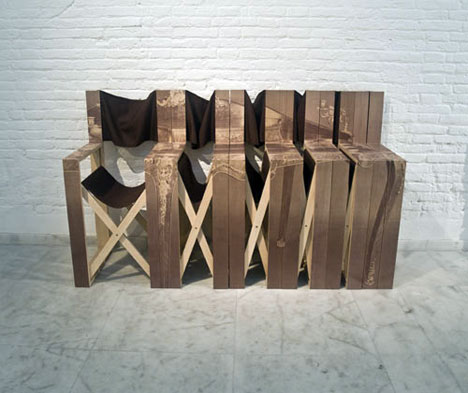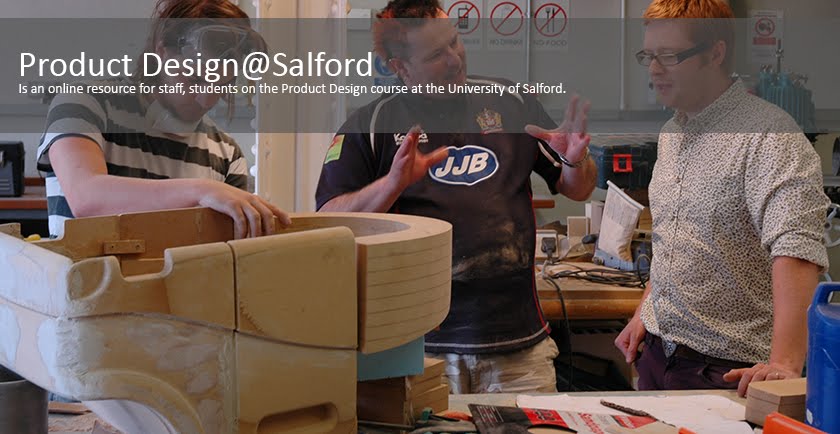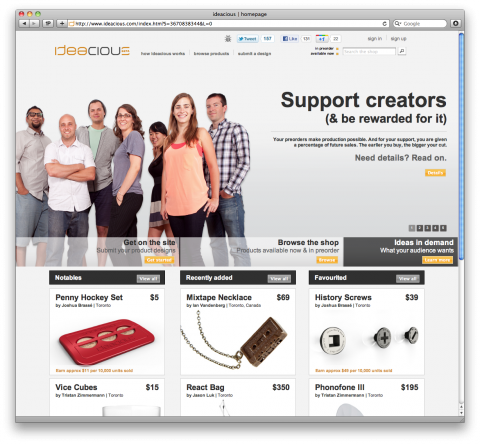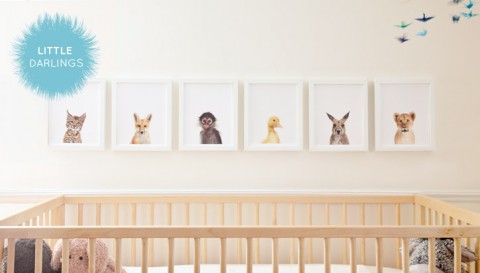Wednesday, October 26, 2011
ideacious: support creators
I discovered ideacious while researching dining room tables. It’s a fascinating concept: ideacious brings together two complementary crowds: buyers and creators. As a buyer you can shop like you would at any other store, or you can buy products before they’re made. When you do that you not only do your part to bring awesome products into being, you could also make some coin along the way. Buyers can shop for two types of products: products that are available now and products in preorder. And with the preorders is where it gets exciting: These are products waiting for enough buyers to produce their first manufacturing run. By preordering a product – that is, putting your money down on an item before it has begun production – you are bringing it closer to being made.
www.ieadcious.com, support creators
Tuesday, October 25, 2011
Beware the Steamy Robot
The adorable Alianoid is a humidifier guised as an alien robot that keeps venting steam in anger! With stubby legs and rotund demeanor, this babe from space is bound to captivate your attention. Simple controls in the form of a dial indicate the water levels and input. Please Lee, put me up in your list as prospective buyers, I so want this!
Size: H510xW330xD330
Color: Black / Gray
Material: Plastic
Designer: Minwoo Lee




----------
Yanko Design
Timeless Designs - Explore wonderful concepts from around the world!
Yanko Design Store - We are about more than just concepts. See what's hot at the YD Store!
(Beware the Steamy Robot was originally posted on Yanko Design)
Friday, October 21, 2011
All students must check their University emails regularly
Post from John Cocksedge
http://www.smashingmagazine.com/2011/10/14/the-dos-and-donts-of-infographic-design/
those fo you looking for inspiration may find this useful
john
The Microbial Home
The Microbial Home is viewed as a cyclical biological machine where wastes like sewage, effluent, garbage, wastewater are filtered, processed and recycled to be used as inputs for the various home functions. The project includes various aspects like a Bio Digester Island and Larder in the kitchen, Urban Beehive, Bio-light, Apothecary, Filtering Squatting Toilet and Paternoster Plastic Waste Up-cycler.
Bio Digester Island




- Central hub in the Microbial Home system.
- Consists of a methane digester, which converts bathroom waste solids and vegetable trimmings into methane gas that is used to power a series of functions in the home.
- The hub is designed as a repositionable kitchen island, including a chopping surface with vegetable waste grinder, a gas cooking range, a glass tank that shows energy reserves and glass elements showing pressure, volume and readiness of compost sludge.
- Materials used in the design are copper, cast iron, glass and bamboo.
- ‘Bio-gas’ is produced by developing a culture of suitable bacteria living on organic waste material from the home.
- The gas from the methane digester is fed to a cooking range and gas mantle lights.
- Water pipes are preheated by the digester and channeled to other components.
- The digester needs a constant supply of waste material and water.
- The dehydrated sludge residue from the digester can be safely removed and used as compost.
Larder



- The larder is a system designed to keep ‘living food’ fresh, by using natural processes (as opposed to dead food in the refrigerator).
- The larder consists of an evaporative cooler and vegetable storage system built into a dining table.
- Twin-walled terra cotta evaporative cooler is at its center, the compartments and chambers vary in wall thicknesses and volumes, and are designed to keep different types of food at different optimal temperatures.
- The outer surface of the cooler is warmed by hot water pipes, which have been pre-heated by the methane digester in the Microbial Home system.
- Above the table is a ceramic garden and larder where vegetable groups are grown and stored on the basis of their symbiotic chemistry.
- The table is made from reclaimed wood, supported by a cast iron structure that consists of water and gas pipes.
Urban Beehive



- The urban beehive is a concept for keeping bees at home.
- The beehive is designed to allow us a glimpse into the world of these industrious creatures and to harvest the honey that they produce.
- It consists of two parts: entry passage and flower pot outside, and glass vessel containing an array of honeycomb frames, inside.
- The glass shell filters light to let through the orange wavelength which bees use for sight.
- The frames are provided with a honeycomb texture for bees to build their wax cells on.
- Smoke can be released into the hive to calm the bees before it is opened, in keeping with established practice.
Bio-light


- The bio-light uses different biological technologies to create ambient light effects.
- The concept explores the use of bioluminescent bacteria, which are fed with methane and composted material (drawn from the methane digester in the Microbial Home system).
- Alternatively the cellular light array can be filled with fluorescent proteins that emit different frequencies of light.
- The design concept shown in this Probe is a wall of glass cells containing a live bacterial culture that emits soft green light by bioluminescence.
- It has been created using a technique where individual cells are hand-blown into a steel frame which is freestanding or hung on the wall.
- Each cell is connected via silicon tubes to the food source, (which is drawn from a reservoir at the base) creating a closed loop system for the living material.
- The food source could potentially be drawn out of the sludge from the methane digester that forms the centerpiece of the kitchen in the Microbial Home.
Apothecary

- A concept for home-centered health monitoring and diagnosis, with the focus on early warning and prevention of disease.
- Analytical functions are designed into the bathroom, where cutting-edge technology analyzes your body constantly and non-invasively, looking for trends in your health, symptoms of wellness and disease, giving advice and warnings where necessary.
- Sensors behind the bathroom mirror that observe the condition of your skin, eyes and retina.
- Breath falling on the mirror is analyzed for chemicals than indicate gum disease, tooth decay, dietary problems, alcohol and drug misuse.
- Brushing your teeth can reveal evidence contained in oral microbiota, saliva and tooth plaque.
- The urine and feces that you deposit into the lavatory are analyzed.
- Showering can reveal the condition of your skin (including its microbiota population), hair and sweat.
- Evidence collected from these multiple sources will be integrated and analyzed. An intelligent wall-mirror-screen can project back at you a bodily health map, highlighting areas where changes are occurring or attention is needed and suggesting solutions.
Filtering Squatting Toilet


- A waste separating squatting toilet that filters effluent while channeling excreta to a methane digester in the Microbial Home system.
- The filter array, comprised of charcoal, sand and ceramic filters, supports a range of plants to clean effluent.
- The flush mechanism is based on the 1 litre flush toilet technique developed by the Sulabh Foundation in India.
Paternoster Plastic Waste Up-cycler

- A concept for a domestic plastic waste up-cycler that uses mycelium to break down plastic packaging waste.
- The paternoster waste up-cycler concept utilizes the properties of fungi that have powerful enzymes and decomposing power.
- A mycelium attached to plastic, would have the ability to decompose and metabolize the plastic.
- In this concept the plastics are ground into small chips and mixed with a fungal starter culture in a glass canister, which is slotted into a compartment of the ‘paternoster’ system.
- A hand-cranked conveyor moves the canisters along a circuit within a dark cavity. Each week plastic grounds are mixed with mycelium.
- It takes several weeks to break down the plastic or other waste material.
- At late stages in the cycle the contents are exposed to daylight (via an aperture) and air allowing the mycelium to sprout delicious mushroom fruit, ready to eat. The decomposing waste can be molded into shapes.
- The paternoster is made out of plywood and copper, and uses off the shelf bottles and containment canisters.
Designer: Philips Design
----------
Yanko Design
Timeless Designs - Explore wonderful concepts from around the world!
Yanko Design Store - We are about more than just concepts. See what's hot at the YD Store!
(The Microbial Home was originally posted on Yanko Design)
frederik roijé: dish of desire

a collection catered to the needs of neighboring birds-- a multiple-plate birdfeeder series created in the spirit of nature preservation.
read more
fitness tracker + music player by motorola: moto actv
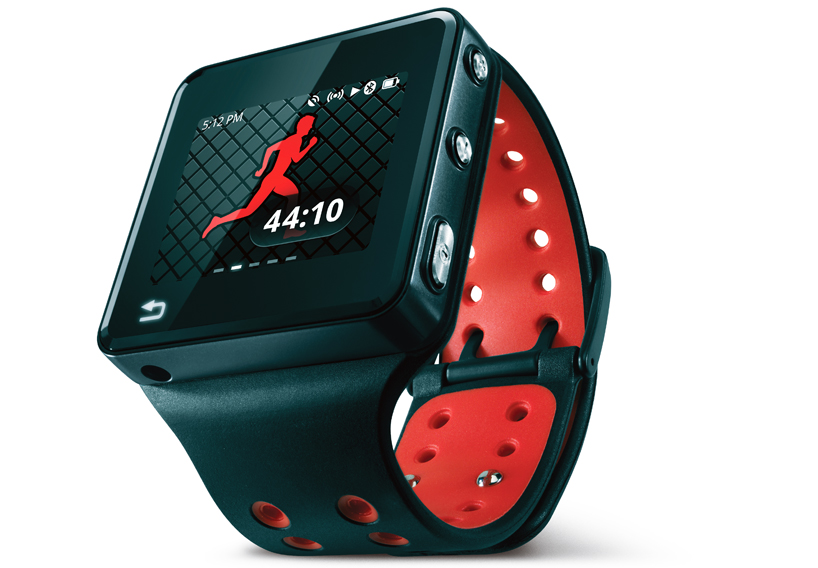
the small wearable music player and phone forwarder uses accusense and GPS to track fitness performance, syncing to an online training system and offering such functionality as auto-determining a user's most energizing songs.
read more
Rebecca Baumann's "Automated Colour Field"

[images by Andrew Curtis]
We're loving Australia-based artist Rebecca Baumann's "Automated Colour Field," which she rigged up out of 100 flip-clocks with their numbers covered by different hues of paper. It was on display earlier this year at the Australian Centre for Contemporary Art in Melbourne (see video after of the piece after the jump!)
(more...)Little Darlings
Sharon Montrose just launched a new collection called Little Darlings. Not falling for cute? Then check this Eagle Owl.
Steve Jobs on Creativity
“Creativity is just connecting things. When you ask creative people how they did something, they feel a little guilty because they didn’t really do it, they just saw something. It seemed obvious to them after a while. That’s because they were able to connect experiences they’ve had and synthesize new things. And the reason they were able to do that was that they’ve had more experiences or they have thought more about their experiences than other people. Unfortunately, that’s too rare a commodity. A lot of people in our industry haven’t had very diverse experiences. So they don’t have enough dots to connect, and they end up with very linear solutions without a broad perspective on the problem. The broader one’s understanding of the human experience, the better design we will have.” – Steve Jobs, Wired, February, 1995
(via this fantastic Brain Pickings post)
Post from John Cocksedge
If you visit the follwoing website you will find an interesting article on the use of infographics along with some advise on how to create them.
http://www.smashingmagazine.com/2011/10/14/the-dos-and-donts-of-infographic-design/
those fo you looking for inspiration may find this useful
john
Tuesday, October 18, 2011
Wispr Vaporizer

The Wispr recently hit the market and has given a previously untapped segment of the smoking population something to shout about. The Wispr is a new product from the world's leading manufacturer of portable herbal vaporizers, Oglesby & Butler, designed by the groovy folks of Thing Tank in San Francisco. After some serious design research on usage and feedback on Oglesby & Butler's successful IOLITE vaporizer, Thing Tank went to work, improving on the original technology and transforming the form. Explains Chris Luomanen, Principal of Thing Tank:
From a form perspective, this is a dream brief for a product designer. It's a category that doesn't know what it looks like yet. When radios first came out and people made them look like churches and fireplaces because nobody knew what a radio looked like.

The butane-powered catalytic heater uses a grill to disperse heat which presents a challenge in keeping the vaporizer cool. Instead of burning the herb, it heats it to a temperature that vaporizes the active elements and creates a vapor that users inhale. Luckily for users, according to a recent NYTimes article on vaporizing, "Vaporized marijuana is virtually free of whatever toxic properties come with burning the plant," said Dr. Lester Grinspoon, an associate professor emeritus of psychiatry at Harvard Medical School."
Read on to hear more from Thing Tank about the design process for the new Wispr and check out their rad video with Sequitur Creative on how to use it.
(more...)Core77 Photo Gallery: London Design Festival 2011
 Photography by Sam Dunne for Core77
Photography by Sam Dunne for Core77
Put the coffee on, close your email, and brace yourself!
We just finished uploading our mega-photo coverage from this year's London Design Festival—truly our favorite design event amongst the many happening globally this season. While 100% Design is still very much at the festivals heart, it get's bigger every year with design destinations including; Decorex, designjunction, Tramshed, Tent, Origin, Designersblock, Brompton Design District, The Dock, Oxo Wharf Tower, V&A, and The Design Museum.
Checkout the highlights for 2011 in our comprehensive gallery and don't miss this crazy Lego Greenhouse, the impressive wooden entrance to the V&A, some stunning new work from design outfit gt2p, this remarkable ball of floorboards installation, and the tribute show to Alan Fletcher.
(more...)
Space-Saving Seating: Mr. Simon's Com-Oda

I'm loving the Com-Oda seating surface, by Valencia, Spain-based graphic and product design studio Mr. Simon. The space-saving twist on the director's chair collapses into a console/ of sorts, allowing you to stow enough chairs for six guests in the space required by just one and a half.
